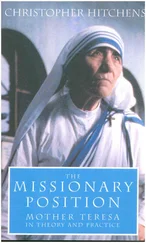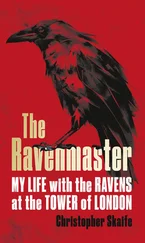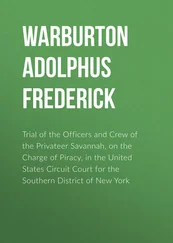Believing there is no God means the suffering I’ve seen in my family, and indeed all the suffering in the world, isn’t caused by an omniscient, omnipresent, omnipotent force that isn’t bothered to help or is just testing us, but rather something we all may be able to help others with in the future. No God means the possibility of less suffering in the future.
Believing there is no God gives me more room for belief in family, people, love, truth, beauty, sex, Jell-O, and all the other things I can prove and that make this life the best life I will ever have.
IAN MCEWAN
End of the World Blues
A novelist who has worked luminously on the frontier that separates the ordinary from the mystical, Ian McEwan has even less patience than Joseph Conrad with the silly invocation of the supernatural. Here is what happens when a cool and lucid intelligence confronts the hysteria and mystification of the apocalyptic: the wretched death-wish that lurks horribly beneath all subservience to faith. Mr. McEwan delivered these thoughts in a lecture at Stanford University in 2007; they appear here in print for the first time.
Since 1839, the world inventory of photographs has been accumulating at an accelerating pace, multiplying into a near infinitude of images, into a resemblance of a Borgesian library. This haunting technology has been with us long enough now that we are able to look at a crowd scene, a busy street, say, in the late nineteenth century and know for certain that every single figure is dead. Not only the young couple pausing by a park railing, but the child with a hoop and stick, the starchy nurse, the solemn baby upright in its carriage—their lives have run their course, and they are all gone. And yet, frozen in sepia, they appear curiously, busily, oblivious of the fact that they must die—as Susan Sontag put it, “photographs state the innocence, the vulnerability of lives heading towards their own destruction….” “Photography,” she said, “is the inventory of mortality. A touch of the finger now suffices to invest a moment with posthumous irony. Photographs show people being so irrefutably there and at a specific age in their lives; [they] group together people and things which a moment later have already disbanded, changed, continued along the course of their independent destinies.”
So, one day, it could be the case with a photograph of us all assembled here today in this hall. Imagine us scrutinized in an old photograph two hundred years hence, idly considered by a future beholder as quaintly old-fashioned, possessed by the self-evident importance of our concerns, ignorant of the date and manner of our certain fate, and long gone. And long gone, en masse.
We are well used to reflections on individual mortality—it is the shaping force in the narrative of our existence. It emerges in childhood as a baffling fact, reemerges possibly in adolescence as a tragic reality which all around us appear to be denying, then perhaps fades in busy middle life, to return, say, in a sudden premonitory bout of insomnia. One of the supreme secular meditations on death is Larkin’s Aubade :
…The sure extinction that we travel to
And shall be lost in always. Not to be here,
Not to be anywhere,
And soon; nothing more terrible, nothing more true.
We confront our mortality in private conversations, in the familiar consolations of religion—“That vast moth-eaten musical brocade,” thought Larkin, “Created to pretend we never die.” And we experience it as a creative tension, an enabling paradox in our literature and art: what is depicted, loved, or celebrated cannot last, and the work must try to outlive its creator. Larkin, after all, is now dead. Unless we are a determined, well-organized suicide, we cannot know the date of our demise, but we know the date must fall within a certain window of biological possibility which, as we age, must progressively narrow to its closing point.
Estimating the nature and timing of our collective demise, not a lecture-roomful, but the end of civilization, of the entire human project, is even less certain—it might happen in the next hundred years, or not happen in two thousand, or happen with imperceptible slowness, a whimper, not a bang. But in the face of that unknowability, there has often flourished powerful certainty about the approaching end. Throughout recorded history people have mesmerized themselves with stories which predict the date and manner of our whole-scale destruction, often rendered meaningful by ideas of divine punishment and ultimate redemption; the end of life on earth, the end or last days, end time, the apocalypse.
Many of these stories are highly specific accounts of the future and are devoutly believed. Contemporary apocalyptic movements, Christian or Islamic, some violent, some not, all appear to share fantasies of a violent end, and they affect our politics profoundly. The apocalyptic mind can be demonizing—that is to say there are other groups, other faiths, that it despises for worshipping false gods, and these believers of course will not be saved from the fires of hell. And the apocalyptic mind tends to be totalitarian—which is to say that these are intact, all-encompassing ideas founded in longing and supernatural belief, immune to evidence or its lack, and well-protected against the implications of fresh data. Consequently, moments of unintentional pathos, even comedy, arise—and perhaps something in our nature is revealed—as the future is constantly having to be rewritten, new anti-Christs, new Beasts, new Babylons, new Whores located, and the old appointments with doom and redemption quickly replaced by the next.
Not even a superficial student of the Christian apocalypse could afford to ignore the work of Norman Cohn. His magisterial The Pursuit of the Millennium was published fifty years ago and has been in print ever since. This is a study of a variety of end-time movements that swept through northern Europe between the eleventh and sixteenth centuries. These sects, generally inspired by the symbolism in the Book of Revelation, typically led by a charismatic prophet who emerged from among the artisan class or from the dispossessed, were seized by the notion of an impending end, to be followed by the establishing of the Kingdom of God on earth. In preparation for this, it was believed necessary to slaughter Jews, priests, and property owners. Fanatical rabbles, tens of thousands strong, oppressed and often starving and homeless, roamed from town to town, full of wild hope and murderous intent. The authorities, church and lay, would put down these bands with overwhelming violence. A few years, or a generation later, with a new leader, and a faintly different emphasis, a new group would rise up. It is worth remembering that the impoverished mob that trailed behind the knights of the first Crusades started their journey by killing Jews in the thousands in the Upper Rhine area. These days, when Muslims of radical tendency pronounce their formulaic imprecations against “Jews and Crusaders,” they would do well to remember that both Jewry and Islam were victims of the Crusades.
Now, the slaughter has abated, but what strikes the reader of Cohn’s book are the common threads that run between medieval and contemporary apocalyptic thought. First, and in general, the resilience of the end-time forecasts—time and again, for five hundred years, the date is proclaimed, nothing happens, and no one feels discouraged from setting another date. Second, the Book of Revelation spawned a literary tradition that kept alive in medieval Europe the fantasy, derived from the Judaic tradition, of divine election. Christians, too, could now be the Chosen People, the saved or the Elect, and no amount of official repression could smother the appeal of this notion to the unprivileged as well as the unbalanced. Third, there looms the figure of a mere man, apparently virtuous, risen to eminence, but in reality seductive and Satanic—he is the anti-Christ, and in the five centuries that Cohn surveys, the role is fulfilled by the Pope, just as it frequently is now.
Читать дальше












